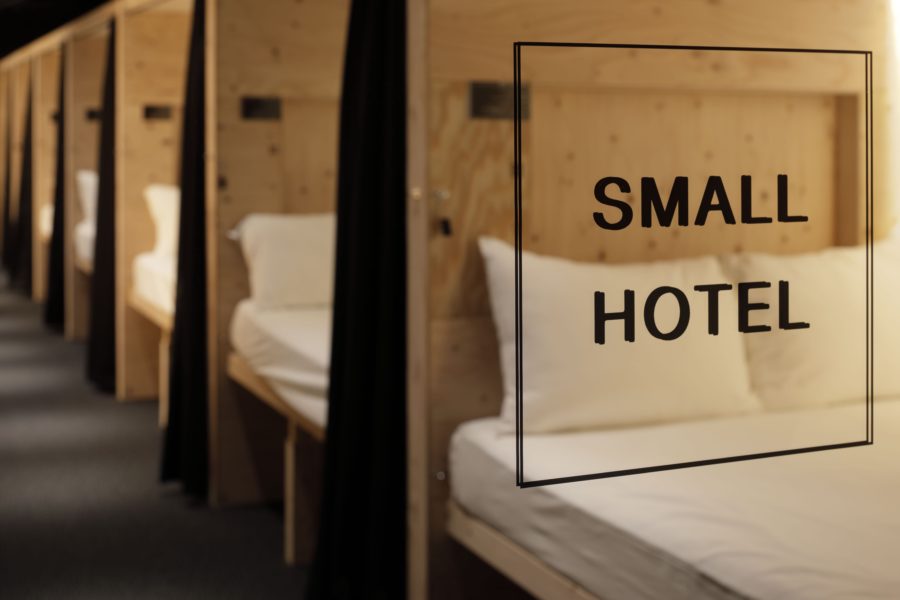敷地は今後10年程度にわたって形状の変更や道路の変更が伴う区画整理区域内にあり、形状も道路付けも現在と異なるかたちとなることが決まっている敷地での計画である。
周辺環境を理解できる現在と、予測のしにくい将来の双方に対して普遍的に存在できる住宅の検討を行った。
中庭型住宅の一種であるが、住宅自体は単純な家型で、外構の透けるルーバー材による仕切りは目線をカットしつつ光や風や気配を透過しながら周辺環境とつながっていく。
普段は個別解として住宅を設計するなかで、答えではなく公式のようなものを模索し、世の中の多くの人に通用するプロトタイプ住宅を目指したいと思い取り組んだ作品である。
一般解でも特殊解でもない、「ふつうの住宅」を目標として模索したかたちだ。
外観の形状は、いわゆる誰もが思い描く「家型」のかたちをベースとし、四角い単純な間取りはコア型のプランニングとすることで平面的に周回できる間取りとした。また、階段を間取りの両端に2カ所配置し、2階を完全な通過型の間取りとすることで、上下階でも回遊できるプランとなりUターンの必要ないかたちになっている。
この家の断面形状は基本的にすべて一定で、金太郎飴のような構成となっている。1階の両サイドに設けた開口による通風はもちろん、天窓部も天候にかかわらずに通風できる仕組みを設け、床下空調までを含めた、断面を利用した上下階の通風が積極的に行われるように計画を行った。
単純な立体の両側に外構によるルーバーの囲いを設け、外部からの視線をある程度制御することでカーテンの必要ない居住空間を確保し、実空間以上に広さを体感できる1階と、小屋裏の広い体積と天窓から差し込む光によるプライバシーの保たれた2階で構成された、試験的住宅である。(長澤 徹)
A universal prototype tried on a site that changes due to land readjustment
The site is located in a land readjustment area where the shape of the land and the roads will change over the next ten years. Therefore, it is a site where the shape and road layout will be different from the present.
We studied a house that can exist universally both in the present when we can understand the surrounding environment and, in the future, when it is difficult to predict.
It is a kind of courtyard house, but it is a simple house. The transparent louvered partitions on the exterior cut off the line of sight while allowing light, wind, and air to pass through and connect with the surrounding environment.
While I usually design houses as individual solutions, this is a work that I worked on to seek a kind of formula rather than an answer and to create a prototype house that many people in the world can use.
It is neither a general nor a specific solution, but a “normal house” that I sought to create.
The exterior of the building is based on the shape of a house that anyone would imagine, and the simple square floor plan is designed as a core-shaped floor plan that can be turned around in a plane. In addition, by placing two staircases at each end of the floor plan and making the second floor a complete pass-through, the plan allows for a circulation of the upper and lower floors without the need for U-turns.
The cross-sectional shape of the house is constant, like a Kintaro candy, with openings on both sides of the first floor for ventilation and skylights for ventilation regardless of the weather. In addition, the building is designed to have a positive ventilation system for the upper and lower floors.
It is an experimental house consisting of the first floor, where one can experience more space than the actual space, and the second floor, where privacy is maintained by the large volume of the shed and the light coming through the skylights. (Toru Nagasawa)
【polaris】
所在地:埼玉県さいたま市
用途:戸建住宅、事務所
クライアント:個人
竣工:2020年
設計:ポーラスターデザイン
担当:長澤 徹
構造設計:武藏靖毅(計画設計)
照明:高木英敏、石田未央(大光電機)
植栽:長谷川隆明(装景NOLA)
施工:篠宮工務店
撮影:藤本一貴
工事種別:新築
構造:木造
規模:地上2階
敷地面積:240.65m²
建築面積:88.37m²
延床面積:126.75m²
設計期間:2019.01-2019.05
施工期間:2019.06-2020.01
【polaris】
Location: Saitama-shi, Saitama, Japan
Principal use: Residential, Office
Client: Individual
Completion: 2020
Architects: polarstardesign architect office
Design team: Toru Nagasawa
Structure engineer: Yasuki Musashi / Keikaku sekkei
Lighting: Hideaki Takaki, Mio Ishida / DAIKO ELECTRIC
Planting: Takahiro Hasegawa / Soukei NOLA
Contractor: Shinomiya komuten
Photographs: Kazutaka Fujimoto
Construction type: New building
Main structure: Wood
Building scale: 2 stories
Site area: 240.65m²
Building area: 88.37m²
Total floor area: 126.75m²
Design term: 2019.01-2019.05
Construction term: 2019.06-2020.01








